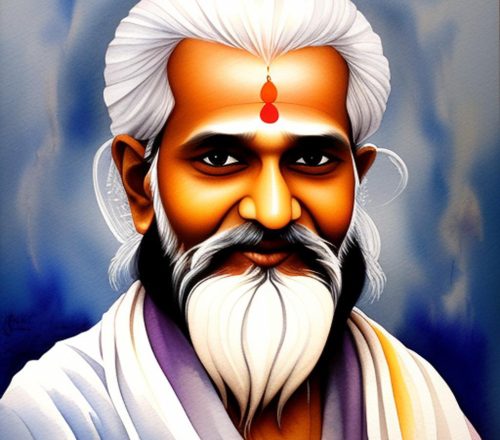
Table of Contents
What is meditation according to scriptures and tradition
Meditation, as described in various scriptures and traditions, is a practice that involves training the mind to achieve a state of deep inner peace, clarity, and spiritual insight. It is a disciplined practice aimed at cultivating mindfulness, concentration, and self-awareness. While meditation may vary in specific techniques and interpretations across different traditions, there are common elements that can be found in many scriptures and teachings.
In general, here are some key aspects of meditation according to scriptures and traditions
Focus and Concentration
Meditation often involves directing and sustaining one’s attention on a chosen object, such as the breath, a mantra, an image, or a concept. The practice helps to develop focus and concentration, allowing the mind to become calm and steady.
Focus and concentration on Amazon
Mindfulness
Meditation encourages the cultivation of mindfulness, which involves non-judgmental awareness of the present moment. It involves observing thoughts, sensations, and emotions as they arise without attachment or aversion.
Awareness of the Self
Many scriptures and traditions emphasize the exploration of one’s own nature or the nature of reality through meditation. This can involve introspection, self-inquiry, or contemplation on philosophical or spiritual questions.
Transformation and Liberation
Meditation is often seen as a means to transform one’s consciousness and achieve spiritual liberation or enlightenment. It is believed to help transcend suffering, attachments, and the illusion of separateness.
Transformation and liberation on Amazon
Ethical and Moral Development
Meditation is not solely about sitting in silence but also about integrating its benefits into daily life. Many traditions emphasize the importance of ethical conduct, compassion, and kindness as foundational principles for meditation practice.
Ethical and moral development on Amazon
There are numerous meditation techniques and practices found in different spiritual and religious traditions, including Buddhism, Hinduism, Taoism, Christian mysticism, and others. Each tradition may have its own unique approach and terminology, but the underlying goal is often similar—to attain a higher state of consciousness, self-realization, or union with the divine.
Meditating on scriptures or nature, not just void
Meditation can be practiced in various ways, including focusing on scriptures, nature, or other specific objects of contemplation. Here are a couple of examples:
Scriptural Meditation
This practice involves reflecting on sacred texts or scriptures. It can involve reading a passage or verse attentively, contemplating its meaning, and allowing the words to penetrate deeply into one’s consciousness. The purpose is to gain insights, deepen understanding, and connect with the spiritual teachings contained within the scriptures.
Scriptural meditations on Amazon
Nature Meditation
Nature has long been recognized as a source of inspiration, tranquility, and spiritual connection. Nature meditation involves immersing oneself in the natural environment, whether it’s a forest, a beach, or a garden, and mindfully observing and appreciating its beauty. By being fully present in nature, one can cultivate a sense of harmony, awe, and interconnectedness with the natural world.
In both cases, the practice of meditation involves directing and focusing one’s attention on the chosen object—be it a scripture, a natural element, or any other point of focus. The aim is to cultivate a state of deep presence, inner stillness, and heightened awareness, allowing for a profound connection with the chosen focus and a deeper understanding of oneself and the world.
Meditation is a versatile practice that can be adapted to various objects of contemplation, and it is the consistency and sincerity of the practice that often yield the transformative benefits.
Other meditation practices
Meditation is a diverse practice with various techniques and approaches. Here are a few other types of meditation:
Mindfulness Meditation
This form of meditation involves cultivating non-judgmental awareness of the present moment. It focuses on observing thoughts, sensations, and emotions as they arise, without attachment or aversion. Mindfulness meditation can be practiced while sitting, walking, or engaging in daily activities.
Mindfulness Meditation On Amazon
Loving-Kindness Meditation
Also known as Metta meditation, this practice involves cultivating feelings of love, compassion, and kindness towards oneself and others. It typically involves repeating phrases or visualizing people while generating feelings of goodwill and benevolence.
Loving-Kindness Meditation on Amazon
Transcendental Meditation
Transcendental Meditation (TM) is a technique where practitioners use a silently repeated mantra to attain a state of deep relaxation and transcendent awareness. It is often practiced for 20 minutes, twice a day, while sitting comfortably with closed eyes.
Kundalini Meditation
Kundalini meditation aims to awaken the dormant spiritual energy located at the base of the spine, known as Kundalini. It involves a combination of rhythmic breathing, chanting mantras, physical movements, and visualization to stimulate and raise the Kundalini energy.
Kundalini Meditation On Amazon
Zen Meditation
Zen meditation, or Zazen, is a central practice in Zen Buddhism. It involves sitting in a specific posture, typically cross-legged, and focusing on the breath or a koan (a paradoxical question or statement) to cultivate mindfulness, concentration, and insight.
Guided Visualization
Guided visualization meditation involves following verbal instructions to imagine specific scenes, images, or experiences. It can be used for relaxation, personal growth, or accessing the subconscious mind to manifest desired outcomes.
Guided Visualization on Amazon
These are just a few examples of the diverse range of meditation techniques available. Each approach has its own unique benefits and may resonate differently with individuals. It’s worth exploring different techniques to find the ones that resonate with you and support your personal growth, inner peace, and spiritual journey.
Meditation in religion
Meditation is a practice found in various religious traditions and plays a significant role in their spiritual and contemplative practices. Here are a few examples of meditation in different religions:
Buddhism
Meditation holds a central place in Buddhism, and different forms of meditation are practiced. One prominent practice is Vipassana or Insight Meditation, which involves mindful observation of one’s thoughts, sensations, and experiences to gain insight into the nature of reality and achieve liberation from suffering. Another well-known practice is Loving-Kindness Meditation (Metta), which cultivates compassion and loving-kindness towards oneself and all beings.
Hinduism
Meditation is an integral part of Hinduism. Practices like Dhyana and Raja Yoga focus on attaining a state of deep concentration and union with the divine. Japa meditation involves the repetition of sacred mantras or the name of a deity to achieve spiritual awakening and communion with the divine.
Christianity
Christian contemplative traditions emphasize meditation as a means of deepening one’s relationship with God. Centering Prayer, derived from early Christian mystics, involves silently repeating a sacred word or phrase to enter into a state of inner stillness and openness to God’s presence. Lectio Divina is a meditative practice of reading and reflecting on scripture, allowing the words to speak directly to the practitioner’s heart.
Islam
Islamic meditation often takes the form of remembrance and contemplation of God’s attributes, known as Dhikr. It involves repetition of sacred phrases, such as “Allah is Great,” focusing on the breath, and seeking spiritual connection with Allah. Sufi practices, like Whirling Dervishes, combine meditation, music, and movement to reach a state of ecstatic union with the divine.
Taoism
Taoist meditation emphasizes aligning oneself with the flow of nature and harmonizing the body, mind, and spirit. Practices such as Qi Gong and Tai Chi incorporate movement, breathwork, and meditation to cultivate balance, vitality, and spiritual insight.
Meditation practices within religious contexts may vary and have specific cultural and doctrinal influences. While meditation can be practiced independently of religious affiliation, it can also be integrated into religious traditions as a means of deepening one’s spiritual connection, seeking wisdom, and experiencing transcendent states of consciousness.
Table showcasing some examples of meditation practices in different religious traditions
| Religion | Meditation Practices |
| Buddhism | Vipassana (Insight Meditation), Metta (Loving-Kindness) Meditation |
| Hinduism | Dhyana, Raja Yoga, Japa Meditation |
| Christianity | Centering Prayer, Lectio Divina |
| Islam | Dhikr, Sufi Meditation |
| Taoism | Qi Gong, Tai Chi, Taoist Meditation |
| Sikhism | Simran (Meditation on God’s Name) |
| Jainism | Samayika (Meditation on Equanimity) |
| Native Religions | Vision Quest, Nature-based Meditation |
This table provides a brief overview and there may be additional meditation practices within each religion. Additionally, meditation practices can vary among different branches, sects, and individual interpretations within each religious tradition.
Table showcasing different types of meditation with their respective focus points
| Type of Meditation | Focus Point(s) |
| Mindfulness Meditation | Breath, body sensations, thoughts, emotions, present moment awareness |
| Loving-Kindness Meditation | Cultivating feelings of love, compassion, kindness towards oneself and others |
| Transcendental Meditation | Repeated mantra |
| Kundalini Meditation | Activation of Kundalini energy, breath, movement, mantras |
| Zen Meditation | Breath, koans (paradoxical questions or statements), present moment awareness |
| Guided Visualization | Verbal guidance, imagined scenes, visualizations |
| Christian Contemplation | Sacred word or phrase, scripture passages |
| Islamic Dhikr | Repetition of sacred phrases, remembrance of Allah |
| Taoist Meditation | Aligning with the flow of nature, breath, movement, energy cultivation |
Please note that this table provides a simplified overview, and each type of meditation can have various nuances and techniques associated with it. Moreover, some meditation practices may involve multiple focus points or evolve over time as practitioners deepen their practice.
What is your favorite kind of meditation and why?
Sources openai Language models, aitrot, picsart and mib
Take time to learn
Invest in your future
Embark on a journey into the realm of affiliate marketing and craft your own website within a vibrant, supportive community. Join me in this adventure, where you can begin as a free starter and stay as long as you desire. Enjoy complimentary hosting and foundational teachings to set you on your path. For those with advanced skills, opportunities to elevate your expertise await. Take a moment to explore and witness the magic for yourself!




